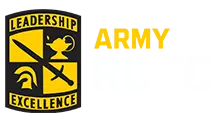Temple University Athletics

Alumni Spotlight: Walter Brown
9.21.23 | General, Men's Golf
This is the fourth in a series of spotlights on Temple Athletics alumni. The series will start with the 2023 Athletics Hall of Fame Class, which will be inducted the weekend of October 6-7.
One of the top players in Temple golf history, Walter Brown had a stellar four-year career and was the first Owl to compete in four NCAA Tournaments. A two-time GCAA All-America selection, he won the individual Middle Atlantic Conference (MAC) Championship as a freshman in 1973, earning a berth in the NCAA Championship. The following year, he shot a course record 63 to lead the Owls to the Yale Invitational title.
His play also led the Owls to their first team appearance in the NCAA Championship. As a junior in 1975, he helped Temple to four team titles, winning two individual championships. He capped his brilliant career by leading Temple to the #1 ranking in the East and six outright team titles. For his career, he posted an incredible 46-2 dual match play record.
Talk about your high school career at Melrose (Mass.) High and the decision to attend Temple University?
"I was playing on the Varsity Golf team as a freshman in high school. Prior to my first match, the seniors were dismissed from the team. I had been playing number six at the time, but after the seniors were dismissed, I was moved to number one. So, I got a break early in getting to be a number one golfer -- and this experience really helped me grow as a golfer and become a team leader. From this point, I put together a high school record that I'm proud of. I only lost one match, which was my next-to-last match my senior year.
Coming out of high school, having won some junior events and played in national events, I was recruited by a couple of colleges, including Temple. John MacDonald was the coach -- and he was a new coach when he recruited me. I liked his energy and his vision for me and the team. Temple ended up being the best fit for me, and my family and I believed it was the place where I could get a good education, succeed on the course, and be close often to home that they could see me play.
There's one funny story during Coach's recruitment. When he came to Boston to interview me, I just had surgery on my hands at that time to continue to address an injury from my childhood. When Coach met me, I had my two hands all bandaged up -- not the ideal condition to hold and swing a club! I explained what I was going through, and I'm grateful that Coach still gave me a chance -- and a scholarship."
What stands out the most from your playing career at Temple?
"I was fortunate to win the MAC Conference Championship as a freshman. As a result of winning the championship, I qualified for the NCAA Championship along with another Temple Hall of Famer, Gary Hardin. We went to Stillwater, Oklahoma to play in the NCAAs against great golfers, including Ben Crenshaw and Tom Kite. It was memorable in the respect that it was different. I was used to playing with a team, and now it was just Gary, myself, and Coach MacDonald.
The following year, on the last hole of the conference championship, Coach came up to me and said, 'Walt, good news, bad news. If you two putt on the last hole, you go to the NCAAs by yourself again -- but if you make the putt, the team goes.' No pressure! I didn't want to let my team down.
I am 190 yards from the green and I have to get it up and down. Well, I hit the ball on the green and it was 45 feet from the hole. I made the 45-footer. Coach gave me the biggest bear hug -- I still remember it. We won the tournament, and the team went to the NCAAs for the first time."
Talk about your record round score of 63 that still stands after nearly 50 years?
"I was a good putter, which always kept me competitive. I did not use a lot of drivers off the tee. Instead, I used a lot of different clubs off the tee mainly to keep the ball in the fairway. On the day I shot 63, I made seven birdies with no bogies and probably only took 23 putts. It was a round of golf that I still haven't forgotten.
At the time, though, the score didn't really didn't register with me and it did not mean that much to me. My mind was on the team, not my individual score. In my view, when you are on a golf team, it is about winning and placing as a team. I did not consider myself to be an individual player until I was forced into an individual situation. So, what meant the most to me is that we won the tournament -- and I was happy that my score could help the team win.
What stood out the most to me in my career was that I got to be the number one golfer. So, when we went to tournaments, I would play with the number one golfers from other teams. Looking back, one factor that propelled me to have a such good college career was that I was playing with and against really great golfers -- I competed against guys who would later play in the PGA Tour, such as Curtis Strange, Jay Haas, and Andy Bean. Competing alongside players of this caliber greatly helped my career."
Talk about your post-Temple career?
"I played in tournaments the summer I got out of college and then decided to go to the PGA Tour Qualifying School. The year I went, the qualifying was in Brownsville, Texas. In those days of Qualifying School, someone wrote a letter for you, you put up $750 and went out and played. If you were one of the Top 60, you got a PGA Tour card.
I went down and made the cuts, but then it was just too much to continue with pursuing being on the Tour. At this time, getting the PGA Tour Card only enabled you to get to Monday qualifying for a PGA Tournament. So, for example, you had to fly to a place like Arizona to try to get one of the 20 spots with however many guys just earned their Tour card. Then, if you emerged from the group on Monday, you then had to play in the actual tournament and make the cut to earn money and qualify for the next tournament. It was not the life I wanted to live.
So, I got married and went back home to Melrose where I grew up. We had children and I ended up working for Johnson and Johnson as a salesperson. It wasn't long before I realized I needed more time off, so I started my own business six or seven years later and was in the medical field for years.
I played some competitive golf as well, at times with my teammate Gary Hardin and another former teammate Randy Stevenson, both already in the Temple Hall of Fame. I also played with other Temple alums, Jack Hubbert and Kevin Klier. I stayed active in golf and taught my two sons the game so that they could enjoy the game I loved and so that we could play together."
What does your induction to the Temple Athletics Hall of Fame mean to you?
"It completes the cycle. This recognition for the effort that I put in to being the best golfer I could be and teammate I could be makes me feel whole. Golf has been a lifelong pursuit for me, and this honor is a way to celebrate all the success I had and put a bow on my golf career. I thank Temple, and especially Coach MacDonald, for giving me a scholarship and an education -- and being inducted into the Hall of Fame feels like Temple saying thanks to me, too."
One of the top players in Temple golf history, Walter Brown had a stellar four-year career and was the first Owl to compete in four NCAA Tournaments. A two-time GCAA All-America selection, he won the individual Middle Atlantic Conference (MAC) Championship as a freshman in 1973, earning a berth in the NCAA Championship. The following year, he shot a course record 63 to lead the Owls to the Yale Invitational title.
His play also led the Owls to their first team appearance in the NCAA Championship. As a junior in 1975, he helped Temple to four team titles, winning two individual championships. He capped his brilliant career by leading Temple to the #1 ranking in the East and six outright team titles. For his career, he posted an incredible 46-2 dual match play record.
Talk about your high school career at Melrose (Mass.) High and the decision to attend Temple University?
"I was playing on the Varsity Golf team as a freshman in high school. Prior to my first match, the seniors were dismissed from the team. I had been playing number six at the time, but after the seniors were dismissed, I was moved to number one. So, I got a break early in getting to be a number one golfer -- and this experience really helped me grow as a golfer and become a team leader. From this point, I put together a high school record that I'm proud of. I only lost one match, which was my next-to-last match my senior year.
Coming out of high school, having won some junior events and played in national events, I was recruited by a couple of colleges, including Temple. John MacDonald was the coach -- and he was a new coach when he recruited me. I liked his energy and his vision for me and the team. Temple ended up being the best fit for me, and my family and I believed it was the place where I could get a good education, succeed on the course, and be close often to home that they could see me play.
There's one funny story during Coach's recruitment. When he came to Boston to interview me, I just had surgery on my hands at that time to continue to address an injury from my childhood. When Coach met me, I had my two hands all bandaged up -- not the ideal condition to hold and swing a club! I explained what I was going through, and I'm grateful that Coach still gave me a chance -- and a scholarship."
What stands out the most from your playing career at Temple?
"I was fortunate to win the MAC Conference Championship as a freshman. As a result of winning the championship, I qualified for the NCAA Championship along with another Temple Hall of Famer, Gary Hardin. We went to Stillwater, Oklahoma to play in the NCAAs against great golfers, including Ben Crenshaw and Tom Kite. It was memorable in the respect that it was different. I was used to playing with a team, and now it was just Gary, myself, and Coach MacDonald.
The following year, on the last hole of the conference championship, Coach came up to me and said, 'Walt, good news, bad news. If you two putt on the last hole, you go to the NCAAs by yourself again -- but if you make the putt, the team goes.' No pressure! I didn't want to let my team down.
I am 190 yards from the green and I have to get it up and down. Well, I hit the ball on the green and it was 45 feet from the hole. I made the 45-footer. Coach gave me the biggest bear hug -- I still remember it. We won the tournament, and the team went to the NCAAs for the first time."
Talk about your record round score of 63 that still stands after nearly 50 years?
"I was a good putter, which always kept me competitive. I did not use a lot of drivers off the tee. Instead, I used a lot of different clubs off the tee mainly to keep the ball in the fairway. On the day I shot 63, I made seven birdies with no bogies and probably only took 23 putts. It was a round of golf that I still haven't forgotten.
At the time, though, the score didn't really didn't register with me and it did not mean that much to me. My mind was on the team, not my individual score. In my view, when you are on a golf team, it is about winning and placing as a team. I did not consider myself to be an individual player until I was forced into an individual situation. So, what meant the most to me is that we won the tournament -- and I was happy that my score could help the team win.
What stood out the most to me in my career was that I got to be the number one golfer. So, when we went to tournaments, I would play with the number one golfers from other teams. Looking back, one factor that propelled me to have a such good college career was that I was playing with and against really great golfers -- I competed against guys who would later play in the PGA Tour, such as Curtis Strange, Jay Haas, and Andy Bean. Competing alongside players of this caliber greatly helped my career."
Talk about your post-Temple career?
"I played in tournaments the summer I got out of college and then decided to go to the PGA Tour Qualifying School. The year I went, the qualifying was in Brownsville, Texas. In those days of Qualifying School, someone wrote a letter for you, you put up $750 and went out and played. If you were one of the Top 60, you got a PGA Tour card.
I went down and made the cuts, but then it was just too much to continue with pursuing being on the Tour. At this time, getting the PGA Tour Card only enabled you to get to Monday qualifying for a PGA Tournament. So, for example, you had to fly to a place like Arizona to try to get one of the 20 spots with however many guys just earned their Tour card. Then, if you emerged from the group on Monday, you then had to play in the actual tournament and make the cut to earn money and qualify for the next tournament. It was not the life I wanted to live.
So, I got married and went back home to Melrose where I grew up. We had children and I ended up working for Johnson and Johnson as a salesperson. It wasn't long before I realized I needed more time off, so I started my own business six or seven years later and was in the medical field for years.
I played some competitive golf as well, at times with my teammate Gary Hardin and another former teammate Randy Stevenson, both already in the Temple Hall of Fame. I also played with other Temple alums, Jack Hubbert and Kevin Klier. I stayed active in golf and taught my two sons the game so that they could enjoy the game I loved and so that we could play together."
What does your induction to the Temple Athletics Hall of Fame mean to you?
"It completes the cycle. This recognition for the effort that I put in to being the best golfer I could be and teammate I could be makes me feel whole. Golf has been a lifelong pursuit for me, and this honor is a way to celebrate all the success I had and put a bow on my golf career. I thank Temple, and especially Coach MacDonald, for giving me a scholarship and an education -- and being inducted into the Hall of Fame feels like Temple saying thanks to me, too."
Ep. 8: Temple Athletics Weekly Recap; Women's Cross Country Runner Amelia Sabatino
Tuesday, September 30
Ep. 7: Temple Field Hockey Alumna Cherifa Howarth
Friday, September 26
Ep. 6: Temple Athletics Weekly Recap; Field Hockey's Peyton Rieger
Tuesday, September 23
Temple Men's Basketball | Mic'd Up at Temple Women's Volleyball Game
Friday, September 19











